Introduction to Esthetics
Claude R. Rufenacht
“Beauty is measure and symmetry and virtue all the world over” (Plato, Dialogues, Philebus), and if the perfect mixture can rarely be found in man, they feel free to strive towards it, point it out, praise it, because “ugliness and discord and inharmonious motion are nearly allied to ill words and ill nature, as grace and harmony are the twin sisters of goodness and virtue and bear their likeness” (Plato, Republic III).
The profound respect for beauty as a fundamental measure of perfection and a measure of the divine is not to be taken lightly or to be associated with human vanity when a degree of perfection is sought in humans themselves.
For the Ancient Greeks and throughout the tradition of Western thought, from Plato to Kant, beauty has not only been at the center of all philosophical preoccupation, but it has blended easily with goodness and truth.
This triad of terms — beauty, goodness, and truth — has been called “the three fundamental values” (with the implication that the worth of everything can be judged in reference to these three standards) or “transcendental” (because everything is in some manner subject to denomination as true or false, good or evil, beautiful or ugly).
Greek culture, whose point of perfection lasted only 60 years, from the Median wars (492 BC) to the Peloponnesian War (431 BC), has been considered the highest expression of human spirit. Its impact on human history, gathered in such an incredibly short time, tends to prove that it contained all the elements deeply imbedded in human nature.
“The predominant elements of Athenian existence were the independence of the social units and a culture animated by the spirit of beauty” (Hegel, Philosophy of History).
Today the influence of Greek culture on modern society is still predominant, but the individual’s legitimate aspiration to beauty has been clouded by the “usefulness spirit” or the necessity to be efficient, which seems to occupy the stage as the only justification of human behavior. Under such conditions the gratuitousness of the human spirit is less considered and, as a result, individuals do not feel free to identify with esthetics if they cannot persuade themselves that it is useful to do so.
This fear, however, is just a screen. Utility or pleasure proposed either as an additional value or as a significant variant of the so-called three fundamentals has been held by Benedict Spinoza (1632-1677) and John Stuart Mill (1806-1873) to be the ultimate criterion of beauty and goodness. With true efficiency always comes a certain degree of beauty that will then bring to the individual some amount of deeply needed moral satisfaction.
We should always remember that, contrary to our masters, we have forsaken the notion that esthetic curiosity as much as intellectual curiosity originally moved us on our path and that the first fields of experimentation we acted upon were our own bodies and minds.
Our primary concern throughout this book will constantly refer to natural and artificial beauty, but we should always keep in mind beauty’s numerous manifestations, such as sensitivity and intelligence, both material and spiritual.
The origins of esthetics and its perception
Esthetics
What is esthetics and what is the significance of esthetics and dental esthetics? Are the roots of esthetics hidden in a world that we are constantly attempting to apprehend, hoping secretly to discover its nature, dissect its rules, reinforce our understanding, and finally, to master its most innermost elements?
Although a dictionary definition of esthetics — “the science of beauty in nature and arts” — appeals to our scientifically oriented education, it does not stand up to Hegel’s statement: “Beauty as the substance of the imagination and feeling, cannot be an exact science” (Fig 1-1).

Fig 1-1 Beauty cannot be an exact science (Hegel). Beauty is virtual (Plato).
The essence of beauty may be the invisible background of the physically perceptive, concrete beauty that rules and decorates the appearance of vegetable and animal species and the constant equilibrium of shapes and colors that can be observed at any time in any geographic location. “Beauty in nature is the mirror of essential beauty.”

If we accept this fundamental principle, then we must find in nature elements that can be reproduced or integrated in humans to mimic the essential beauty because the esthetic of human forms appears as a microcosm in the universal macrocosm.
This approach will permit us to aim at the development of objective criteria of beauty as well as at the ability to discriminate critically between the beautiful and the ugly. This is not to say that beauty is purely objective. If it were so, no training would seem to be necessary for sharpening our perception of it. There seems to be a middle ground between objectivity and subjectivity of beauty intrinsic to an object without denying the influence of individual sensitivity.
The fact that esthetic judgment requires universal assent does not preclude the necessity to win assent from all individuals. Not all people have good taste, or, having it, have it to the same degree, but the universal character of esthetic judgment in respect of individual feelings tends to refute the notion that in matters of beauty one can seek refuge in the adage: “Everyone has his own taste” (Darwin).
Perception
“Human beings represent the sensitive vector that gives life to essential beauty” (Leonardo da Vinci; Fig 1-2).

Fig 1-2 Human beings represent the sensitive vector that gives life to virtual or essential beauty (L. da Vinci).
In a broader sense, esthetics is a phenomenon of the intellect. When the term esthetic or unesthetic is used, it engenders an emotion that connotes that which is pleasant or unpleasant. The process of perception is an organization of sensory data (sight, touch, hearing, taste, and smell stimuli), which are brought to the intellect where an answer is developed in combination with the results of previous experiences or beliefs that are unconsciously interpreted. This is what is known as a precept. In visual perception the physiologic functions of rods and cones bring stimuli to the center of vision of the brain where they engender a psychologic response that may be conditioned by a variety of factors.
Visual perception is a prerequisite for esthetic appreciation in the same fashion that visual examination is also a routine in normal clinical investigation.
If the interpretation of clinical results is possible by reason of scientific knowledge, the comprehension of esthetic principles should permit a logical evaluation of the fundamentals of beauty. This necessitates esthetic training to refine our perception and permit the development of individual feelings in accordance with objective criteria. As a result, the objective diagnosis of elements that have been subjectively appreciated or rejected will become progressively possible to the extent that the capacity to please will be restricted to objects or elements that should elicit that reaction.
“This faculty for the appreciation of beauty is related to high tastes acquired though culture and depends upon complex associations” (Darwin).
Scientific investigations into the physiology and psychology of perception have resulted in the formulation of certain principles or parameters of visual perception that provide a basis for an introduction to the elements of esthetics that are part of essential and natural beauty.
The schematic framework of esthetic parameters should be used as a reference guide into which everybody should be free to introduce elements that may reveal that which is of importance as well as to ignore others not adapted to the situation.
The evaluation of parameters dealing with human personality, key elements bringing life to human esthetic, should never be ignored because their integration will allow us to fulfill the individual’s demand for esthetic self-satisfaction (Fig 1-3).
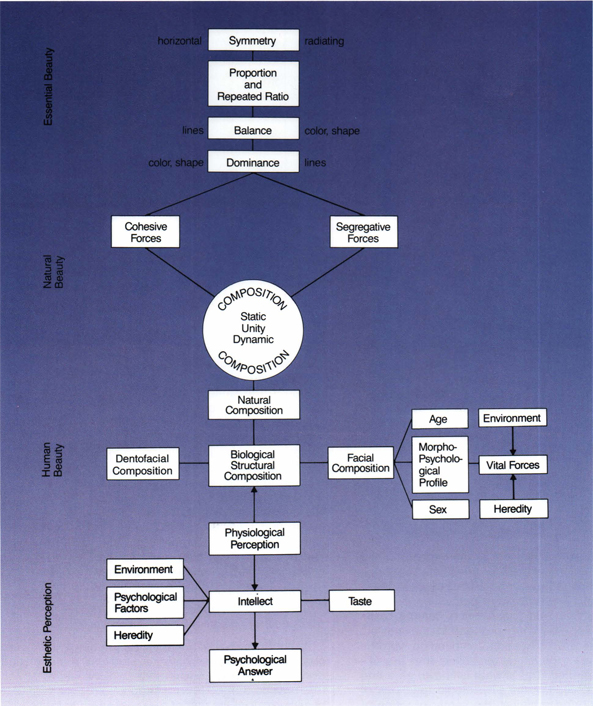
Fig 1-3 Schematic framework of esthetics.
Composition
The physiologic property of the eye is vision. Vision is possible if the eye can differentiate. This is possible only if there is contrast. The increase of visibility is proportionate to the increase in contrast. We are able to see because of the contrasts of colors, lines, and texture (Figs 1-4a to c).

Fig 1-4a
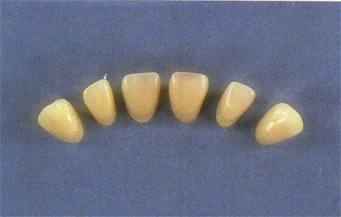
Fig 1-4b
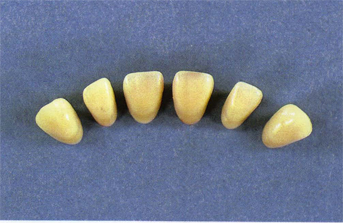
Fig 1-4c
Figs 1-4a to c Objects are made visible by contrast. The increase of visibility is proportional to the increase of contrast.
The relationship between objects made visible by contrasts is called composition. In our field of interest the following terminology will be used: dental composition, dentofacial composition, and facial composition (Figs 1-5 to 1-7).
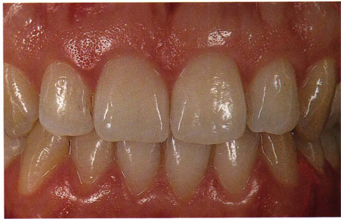
Fig 1-5 Dental composition.
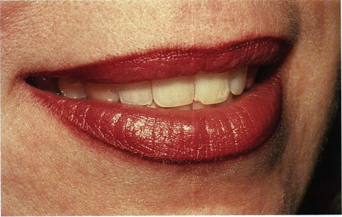
Fig 1-6 Dentofacial composition.
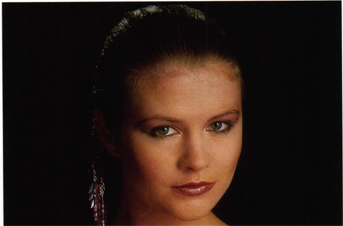
Fig 1-7 Facial composition.
Unity
The prime requisite for a composition is unity that will give the different parts of the composition the effects of a whole.
Two types of unity exist: static and dynamic. Static unity is composed of geometric and regular shapes, such as inorganic shapes and forms, eg, drops of water, snowflakes, and crystals (Fig 1-8). Passive and inert (without motion) static design is based on a regular, repetitive pattern. Plants and animals are dynamic units: active, living, and growing (Fig 1-9).

Fig 1-8 Bound together as a “whole,” a static unity is inert, based on geometric and repetitive patterns.

Fig 1-9 Bound together as a “whole,” a dynamic unity is a living, growing entity, based on dynamic units.
Cohesive and segregative forces
Cohesive forces
Elements that tend to unify a composition are cohesive forces. A border is a cohesive force as well as arrangements of elements in a definite form or according to a principle (Figs 1-10 and 1-11).
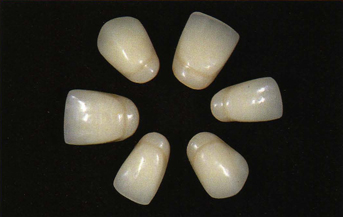
Fig 1-10 Cohesive forces tend to unify a composition. They are represented by elements arranged according to a principle.
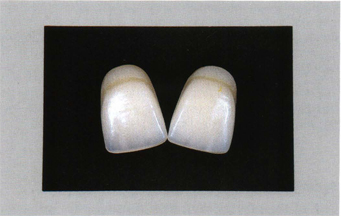
Fig 1-11 A frame or elements arranged in a definite form, giving strength to a composition represent typical cohesive forces.
Segregative forces
Segregative forces are the opposite of cohesive forces. They provide variety in the unity, which is required to make a design effective because even if the elements must be bound together in a whole, they must be arranged in an interesting manner (Figs 1-12 and 1-13).
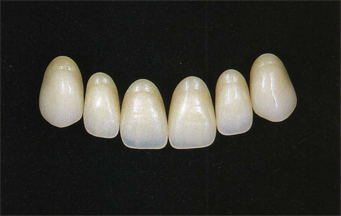
Fig 1-12 Segregative forces are represented by elements arranged in an appealing manner, reminders of an interesting thing or event, such as a Class I tooth arrangement.
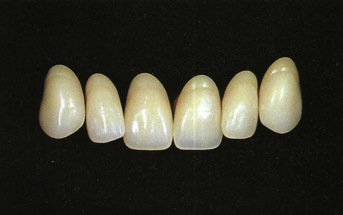
Fig 1-13 Segregative forces are the necessary elements that enhance the esthetic value of a composition. A slight malposition, a reminder of a Class II arrangement, conforms to this definition.
Principle: In a dentofacial composition, harmony depends on the equilibrium created by cohesive and segregative forces (Figs 1-14 and 1-15).
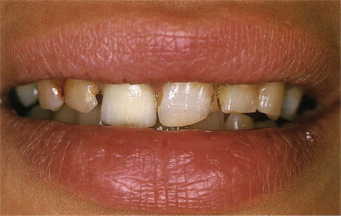
Fig 1-14 When segregative forces that cannot be identified with reality or thinking (eg, tooth design and structure) are introduced in a composition, disharmony can result if cohesive forces (eg, lip frame structure) are not able to restore the necessary equilibrium.
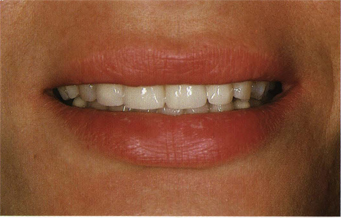
Fig 1-15 The restoration of harmony requires the presence of cohesive and segregative forces. This is a condition necessary to ensure the esthetic equilibrium of a composition.
Symmetry
One of the primary concerns in esthetics is symmetry. Symmetry refers to the regularity in the arrangement of forms or objects (Furtwangler, 1964). It is and can be totally differentiated from balance in the sense that in balance things that are farther from the center grow in importance and weight. This is not the case for symmetry where all elements are alike with reference to their position in relation to a central point.
We can differentiate between two kinds of symmetry: (1) horizontal, or running symmetry, and (2) radiating symmetry. Horizontal symmetry occurs when a design contains similar elements from left to right in a regular sequence. Radiating symmetry is a result of the design of objects extending from a central point and the right and left sides are mirror images. Examples of horizontal or radiating symmetry and asymmetry can be best found in the variety of dental arrangements (Figs 1-16 and 1-17). Horizontal symmetry that is psychologically predictable and comfortable tends to be monotonous (cohesive forces), whereas radiating symmetry generally represents a segregative force that brings life and dynamism to a composition. However, this statement, approved by a majority of dental professionals, does not always conform to patients’ preferences, who seem to favor forms and designs that are repetitive and regular. This infers that they may prefer teeth or tooth arrangements that look less natural but conform to their concept of ideal esthetic appearance.
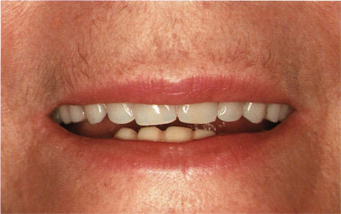
Fig 1-16 Horizontal symmetry can be described as an arrangement in which all elements are alike.

Fig 1-17 When one part of the composition is />
Stay updated, free dental videos. Join our Telegram channel

VIDEdental - Online dental courses


